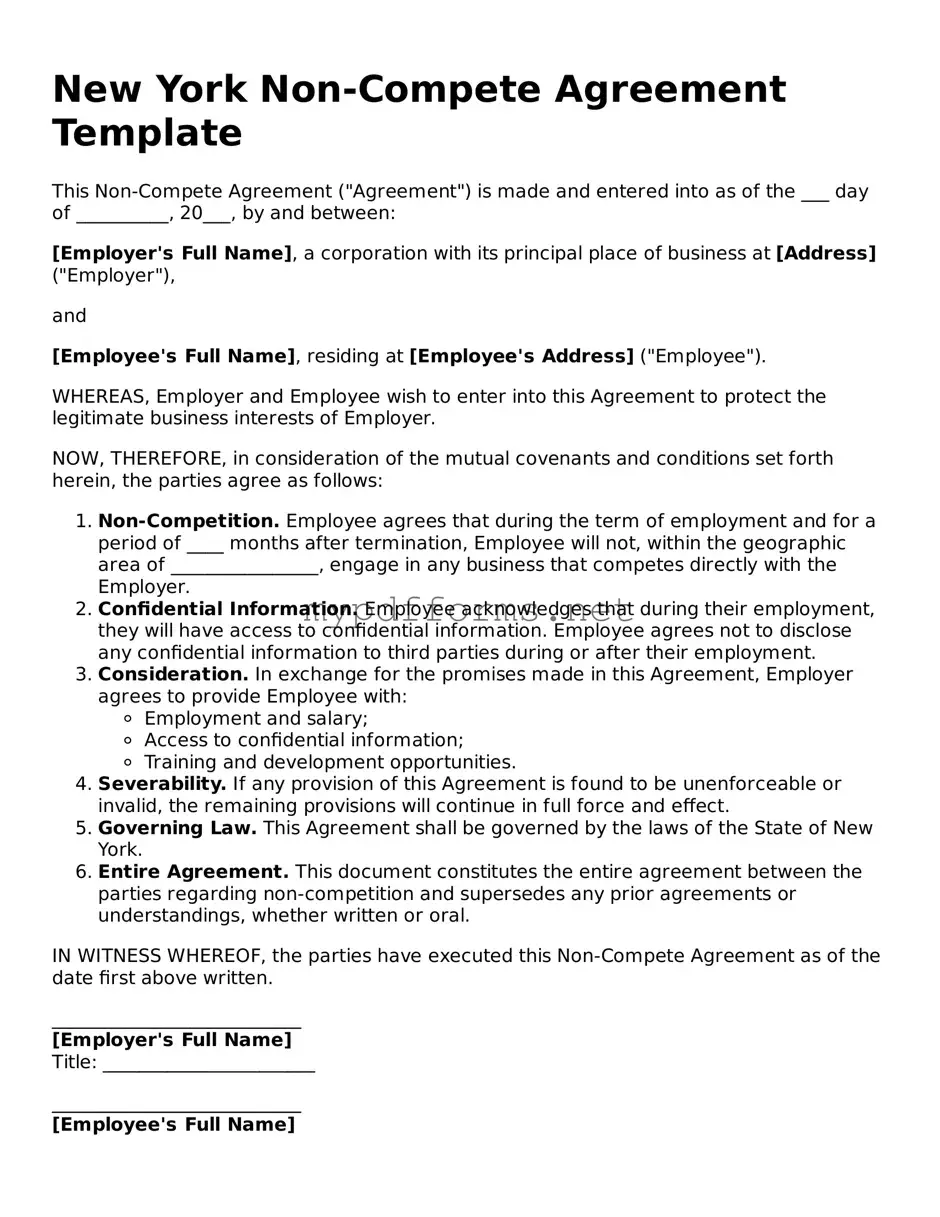In the competitive landscape of today's job market, the New York Non-compete Agreement form serves as a crucial tool for both employers and employees. This document outlines the terms under which an employee agrees not to engage in certain activities that could potentially harm their employer's business interests after leaving their position. Key aspects of the form include the duration of the non-compete period, the geographic scope of the restrictions, and the specific activities that are prohibited. Employers often seek to protect their trade secrets, client relationships, and proprietary information through these agreements, while employees must carefully consider the implications of signing such a document on their future career opportunities. Additionally, the enforceability of non-compete agreements in New York has been shaped by evolving legal standards, making it essential for both parties to understand their rights and obligations. As businesses navigate the complexities of these agreements, employees are encouraged to seek clarity on the terms and to evaluate how they align with their professional aspirations.
